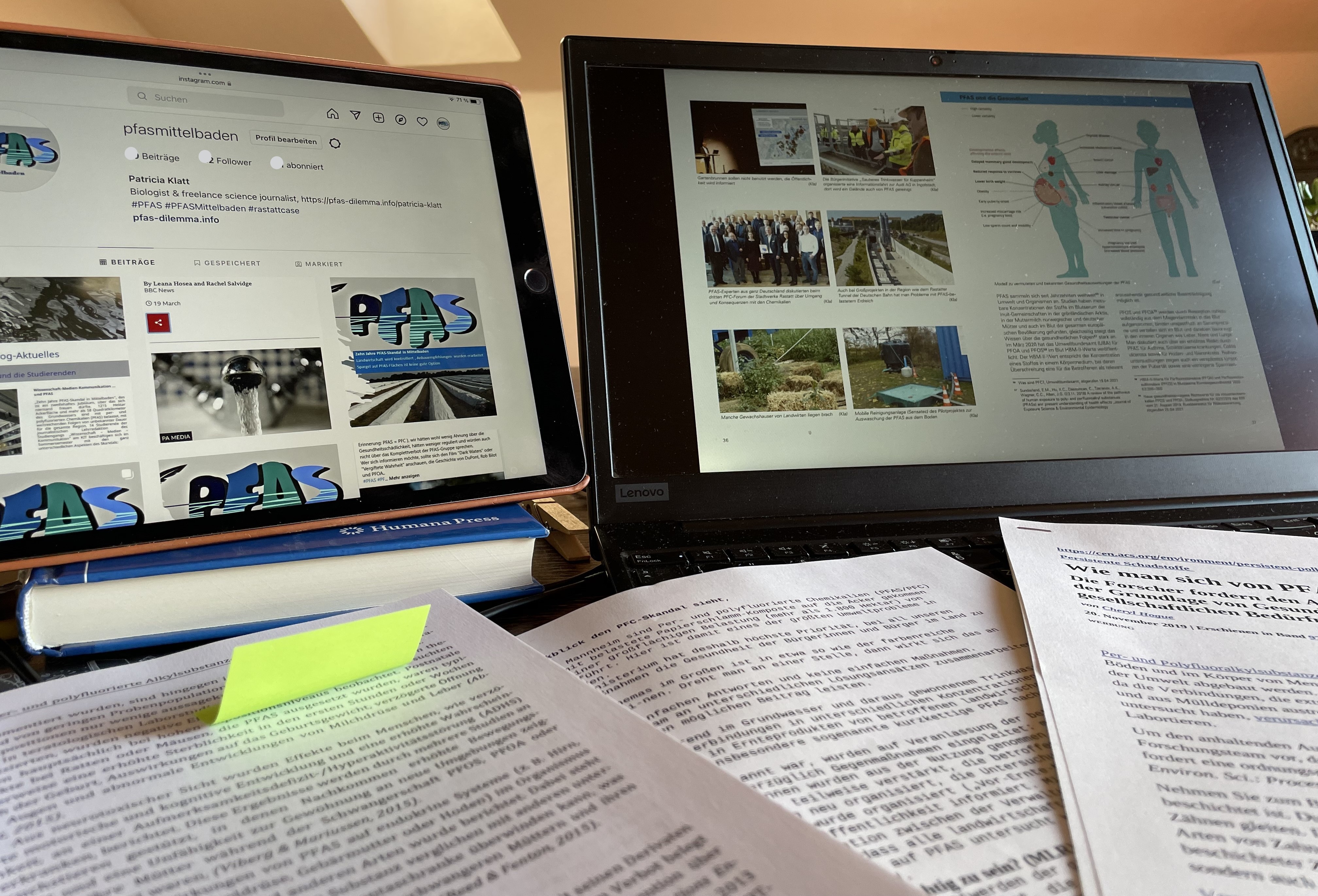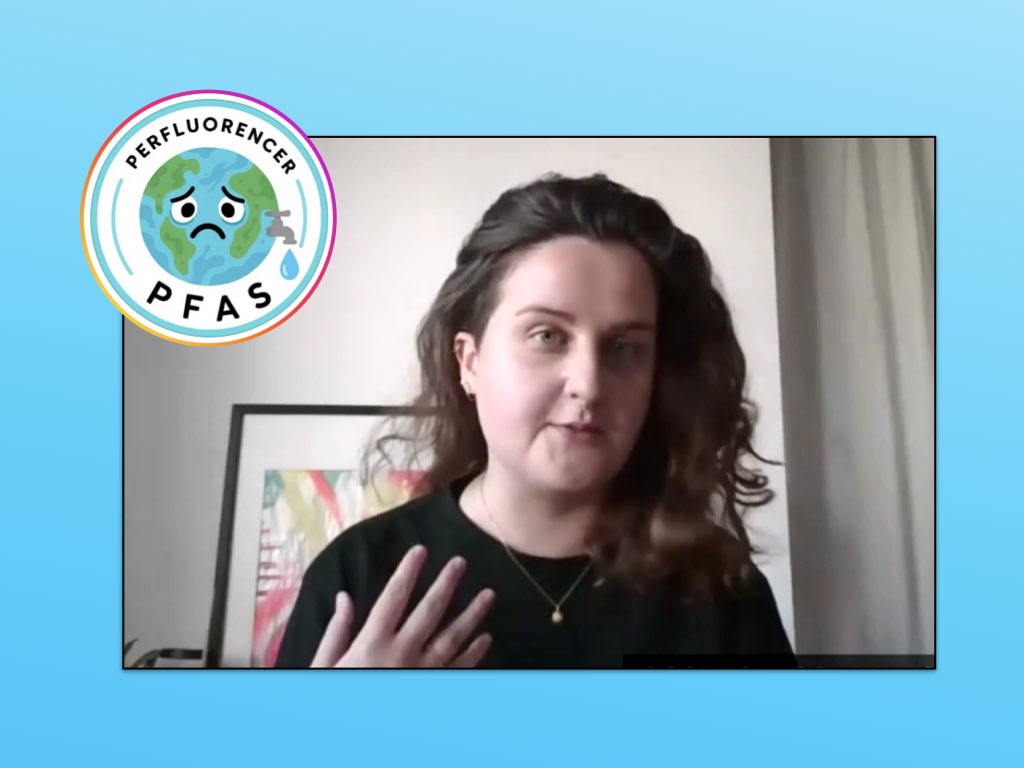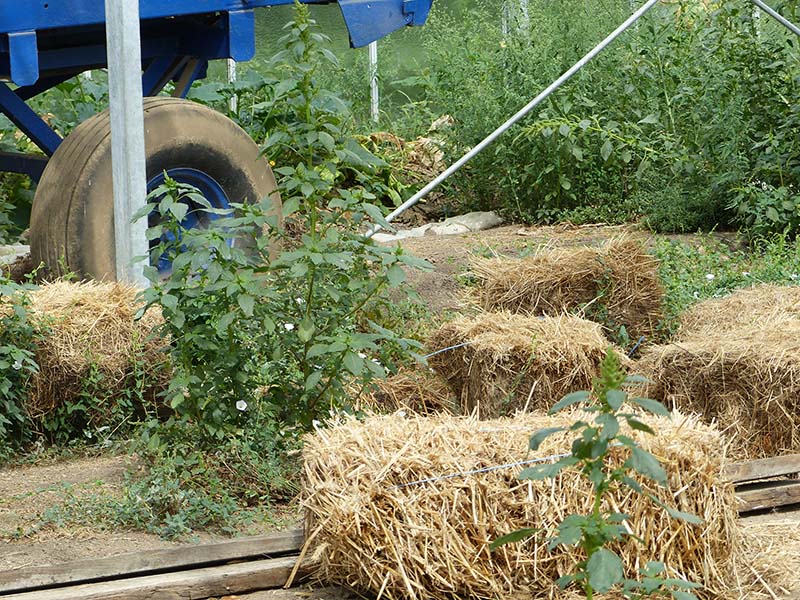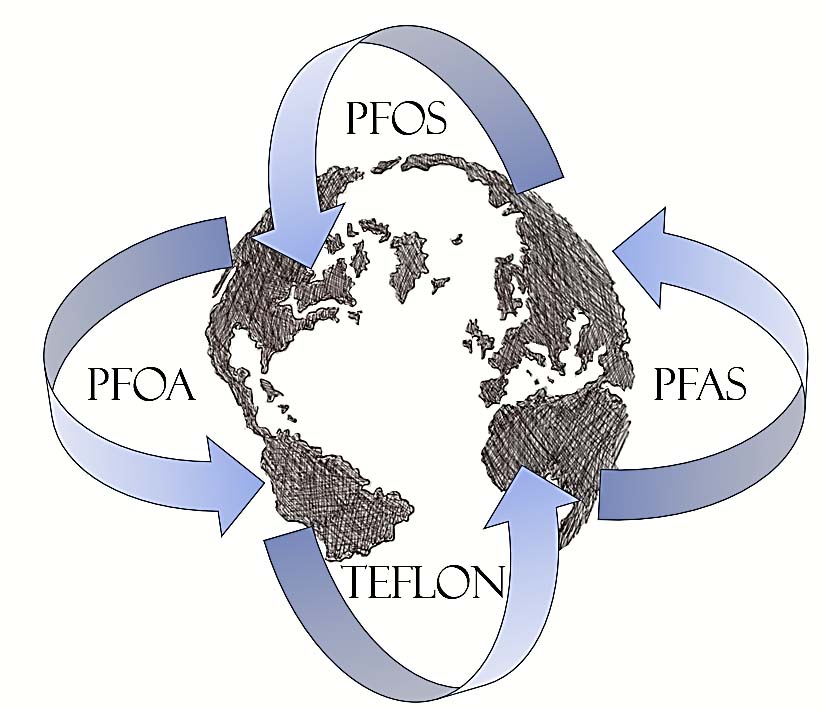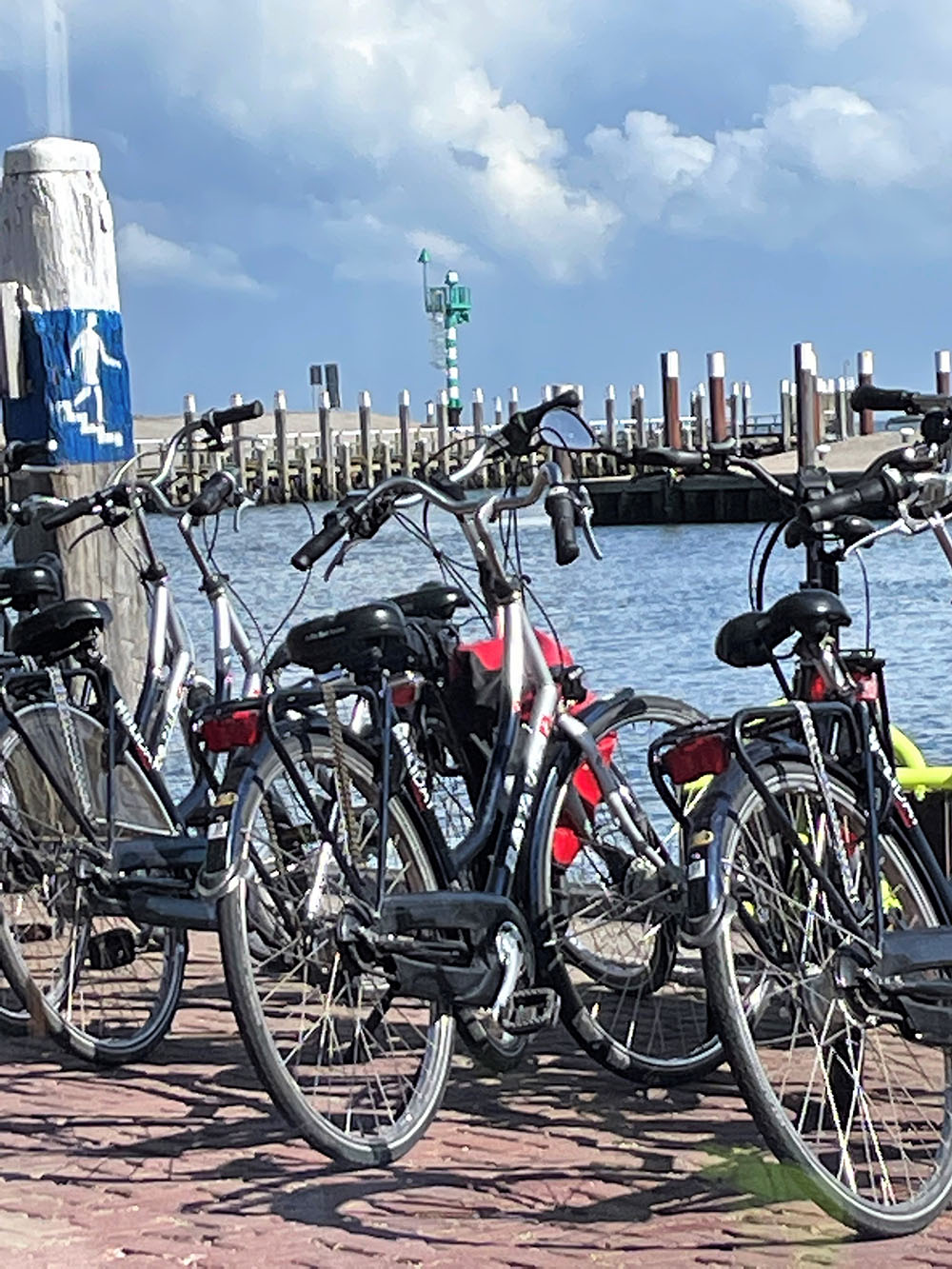This interview is part of the student-led Instagram project @perfluorencer, developed as part of the Science – Media – Communication program at the Karlsruhe Institute of Technology (KIT). Over several months, the team explored PFAS – per- and polyfluoroalkyl substances, also known as “forever chemicals.” These substances are found in rain jackets, fast food wrappers – even in our blood. But who's responsible? And how do we get out of this mess?
Environmental psychologist Ellise Suffill from the University of Vienna is part of the EU ZeroPM project, where she investigates how targeted labelling and communication can reduce the use and environmental impact of persistent and mobile chemicals.
In this interview, conducted by Maja Lepre, Hannes Kauf, and Diego Barrera Manjarres, she explains how consumers can recognise PFAS in everyday products, whether a digital product passport could bring more transparency, and why PFAS remain an underestimated risk despite growing awareness.
With the kind permission of all involved, I am pleased to share this interview here in the section “PFAS-Gespräche” on pfas-dilemma.info.
Why PFAS Are Still Overlooked: Hidden Risks and Public Awareness
1. Could you introduce yourself briefly?
Suffill: “I'm a researcher at the University of Vienna and I work in the environment of psychology lab, so that means we look at both how people interact with their environments, but also how they are affected by and in turn affect their environments and kind of in that we also look at chemical pollution and chemical risk.”
2. What exactly are your responsibilities in the project "ZeroPM"?
Suffill: “So along with Professor Sabine Pahl and Professor Matt White, we examine the social aspects of PFAS pollution. How an expert is going to respond to a chemical risk is often very different to how non-experts will respond to it. We have to try and take into account what people know, what they don't know, and how they're going to respond on the basis of that.”
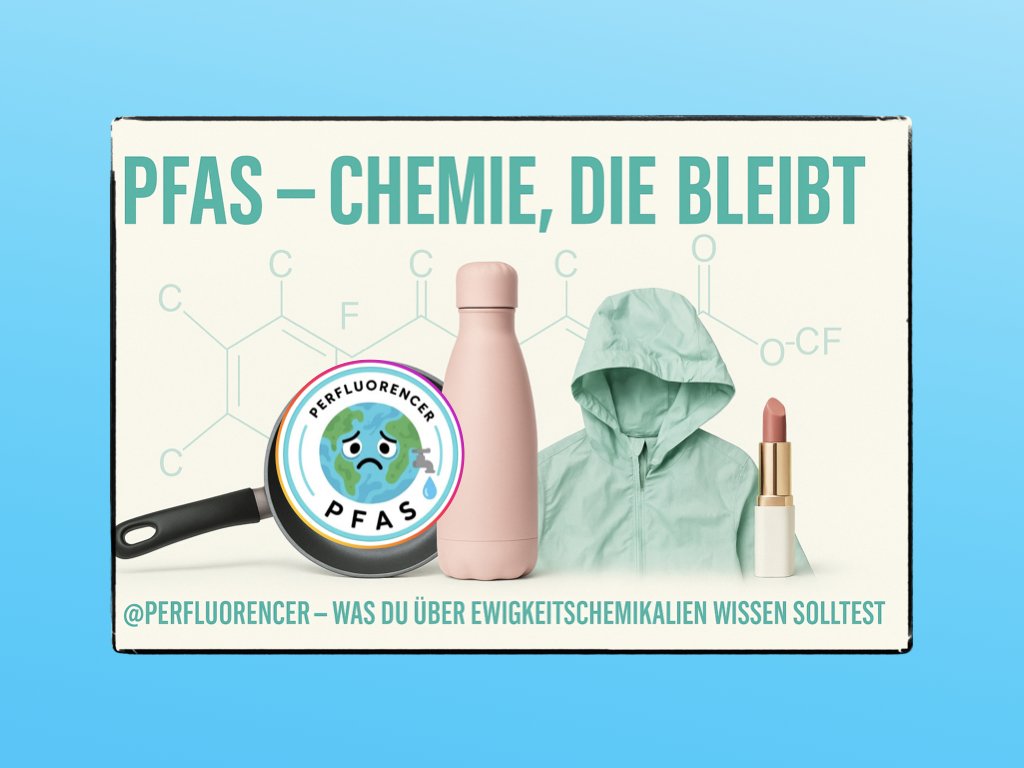
Communicating PFAS Risks: How to Inform the Public Effectively
3. What methods do you use to communicate your research on PFAS to the public?
Suffill: “In terms of what people can do to find out whether PFAS is in the product, the main thing that you'll see on the market is claims to be PFAS free. All you can do aside from labelling is look at online sources. I think, for example, Ecotec, and they have a list of, for example, where you can find products that don't contain PFAS. So, at the moment there is little available beyond manufacturers’ claims of being PFAS-free. And then this additional kind of initiatives usually on a national level where you can go and see which products they've tested, which products they haven't. At the moment it's mainly the internet and these claims by producers that are PFAS free.”
4. Are there ways for consumers to identify products that do or do not contain PFAS in everyday life? If so, what should they look out for?
Suffill: “In terms of what's coming in the future, well, as I've said, the CLP classification, of course, toxicity already has a warning label attached to it, but the persistence, mobility and bioaccumulative, they were recently introduced. And so, this will be on small, you know, a small label with text on products that basically explains what persistence is and why it's a problem and that this product is, or this product has evidence that it will build up in living organisms, there's potential schemes like the digital passport scheme. The idea with the digital passport is that people will be able to scan a QR code and it will show them information not just about PFAS, not just about PMTs, but about any kind of potentially concerning chemical in the product. Again, yeah, it's the CLP regulation of these substances and also potentially the digital passport scheme.”
PFAS-Free Home: How to Choose Furniture Without Harmful Chemicals
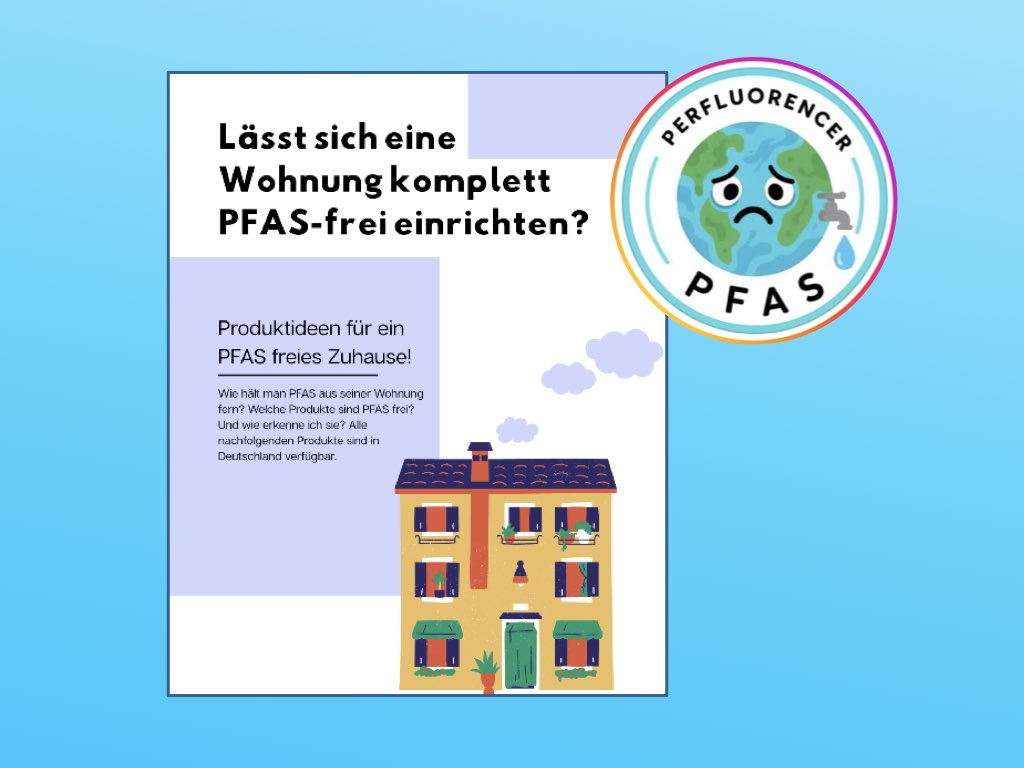
5. How would you furnish an apartment while avoiding PFAS?
Suffill: “In order to kind of try and furnish apartments without PFAS, it's going to be tricky because PFAS is used in so many things and in the production of so many things. You know, there are companies that have been for example part of the pop free movement for a long time.
Particularly Scandinavian companies not to name anyone specific but there's a large Swedish furniture retailer for example and they have been involved in kind of innovation away from PFAS since 2009. But you know you can try to look for retailers that have been involved in this movement for a longer time and you know there's individual aspects such as carpeting.
Now, I come from Britain and in the UK, carpeting is common in households. Carpets are often treated with PFAS, for example, for stain resistance, for durability. Now, if you go and have a hardwood floor or tiles instead, that's one way to reduce PFAS. But again, it should be, you know, people don't need to rip out and completely refurnish their homes to not have PFAS in them.
It should be standard that we're not using things that we can't break down and get rid of in the environment for example. You can try and look for you know, these socially active industries, that are members of for example pop-free and this moving away from PFAS.”
6. Would you say that PFAS are the most „slept on“, or ignored chemical danger in today’s society?
Suffill: “Whether PFAS is a slept on problem in society. I would say First of all, there's that many problems in society right now. It becomes almost too much of a burden for your average person to think about all these things and try to actively avoid them or deal with them in some way while they're also doing their normal lives with their families, with their jobs. I think there's a lot of problems that have been minimized, I would say, with PFAS, particularly in the US. There is evidence that it's been actively suppressed.
For example, this is coming out in films like Dark Waters, which tell this story where we see that key industry players and also some local authorities worked to actively suppress the local response to what they were seeing happen. What we're now seeing in Europe is that some of those industries from the US have moved to Europe and we are now seeing high contamination cases which are becoming very high profile, so for example, in Belgium and the Netherlands there are mothers who can't breastfeed. They can't have, for example, drink water in the area and they can't eat food from the land in the area.
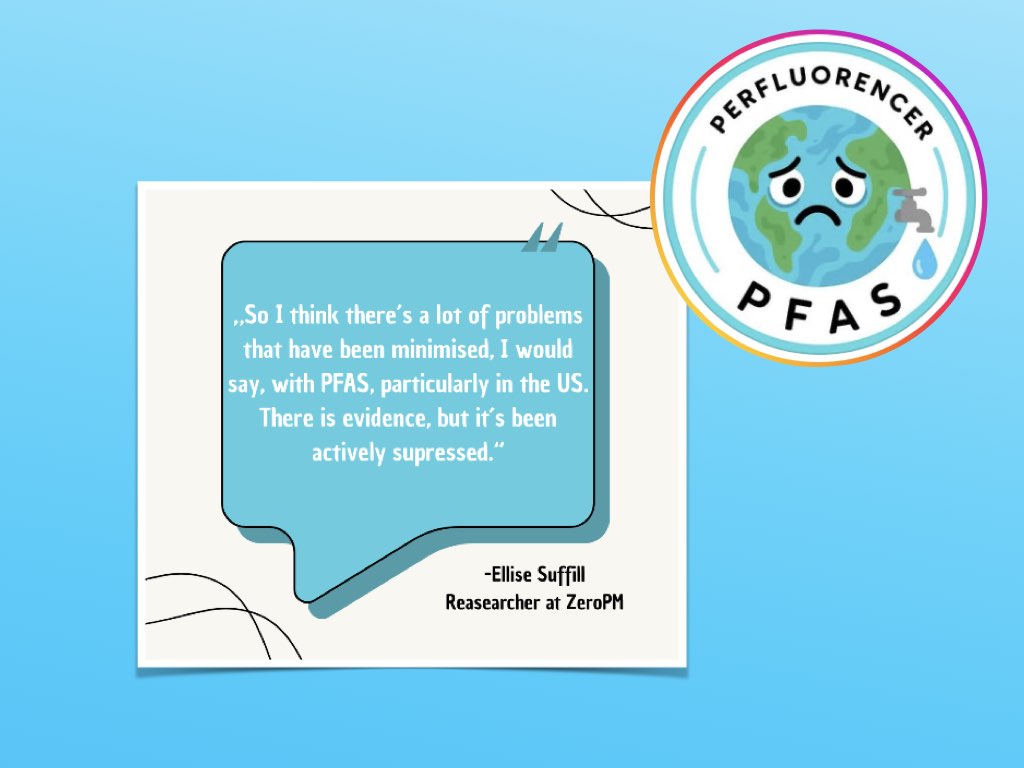
So, these are the same kind of companies that were involved in the large-scale lawsuits in America eventually, and they've now just moved over to Europe. And so of course the problem with PFAS is it's so mobile that even if you stop using it in one area and you go off to another area, you pollute that area, but you also just wherever they go next, they will continue to release PFAS, and this is going to be a problem globally.
It's interesting, but you know, we want to get the awareness up to the same level as microplastics, but we don’t want to scare people. You know, if you put too much on people, they just shut down. And then, they feel powerless and end up ignoring the issue. So, you want to increase awareness but give people the feeling, they can actually do something about it, for example, not just as consumers, but as voters.”
7. Finally, if you had to explain PFAS to a child in just one sentence, how would you put it?
Suffill: “If I had to explain PFAS in one sentence to a child, I would say, well, it's a chemical made in a lab, which once it gets into nature, it doesn
Dr. Suffill, thank you very much for the interview.
Interview conducted by: Maja Lepre, Hannes Kauf, Diego Barrera, July 2, 2025

Instagram-channel of the KIT-students: @perfluorencer, (https://www.instagram.com/perfluorencer/ )

